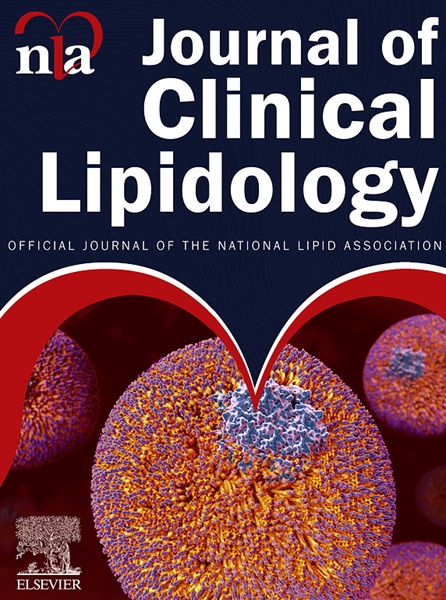Modifications on lipid profile and high-density lipoprotein function related to treatment with tofacitinib in female patients with rheumatoid arthritis: Impact of previous therapy with biological agents
IF 3.6
3区 医学
Q2 PHARMACOLOGY & PHARMACY
引用次数: 0
Abstract
BACKGROUND
Tofacitinib, a Janus kinase inhibitor, has been associated with increased cardiovascular (CV) risk in rheumatoid arthritis (RA). This study evaluated tofacitinib's effects on lipid parameters and the impact of prior biological agents’ therapy in RA patients.
METHODS
Thirty female RA patients starting tofacitinib were assessed at baseline and after 3 months. Clinical assessments, health assessment questionnaire (HAQ), disease activity score 28 (DAS28), inflammatory markers, lipid profile, oxidized low-density lipoprotein (LDL), activities of paraoxonase 1 (PON 1), lipoprotein-associated phospholipase A2 (Lp-PLA2), cholesteryl ester transfer protein (CETP), high-density lipoprotein (HDL) composition, and HDL functions (cholesterol efflux and free cholesterol uptake from triglyceride-rich lipoproteins [TGRL]) upon lipolysis were measured.
RESULTS
After 3 months, HAQ and DAS28 scores improved significantly. Total cholesterol (TC), HDL-C, non-HDL-C, and HDL capacity to acquire free cholesterol from TGRL increased, while enzyme activities and cholesterol efflux capacity remained unchanged. At baseline, patients with prior biological therapy (n = 19) had lower triglycerides, TC, non-HDL-C, and apolipoprotein (apo) B compared to biologic-naïve patients (n = 11). This group exhibited no lipid changes after tofacitinib, whereas biologic-naïve patients showed atherogenic increases in TC, LDL-C, non-HDL-C, apo B, Lp-PLA2, and CETP, alongside beneficial increases in PON 1 activity.
CONCLUSION
Tofacitinib improved disease activity and functional status in RA patients with minimal lipid changes. Patients previously treated with biological agents experienced no significant lipid alterations, while biologic-naïve patients showed atherogenic lipid changes and increased PON 1 activity. Prior biologic therapy may confer a more favorable CV profile before and after tofacitinib treatment.
托法替尼治疗对女性类风湿关节炎患者血脂和高密度脂蛋白功能的影响:既往生物制剂治疗的影响
背景和目的:托法替尼(Tofacitinib)是一种Janus激酶抑制剂,与类风湿性关节炎(RA)患者心血管(CV)风险增加相关。本研究评估了托法替尼对类风湿性关节炎患者脂质参数的影响以及既往生物药物治疗的影响。方法:对30例开始使用托法替尼的女性RA患者在基线和3个月后进行评估。测量临床评估、健康评估问卷(HAQ)、疾病活动度评分28 (DAS28)、炎症标志物、脂质谱、氧化低密度脂蛋白(LDL)、对氧磷酶1 (PON 1)、脂蛋白相关磷脂酶A2 (Lp-PLA2)、胆固醇酯转移蛋白(CETP)、高密度脂蛋白(HDL)组成和HDL功能(富含甘油三酯的脂蛋白[TGRL]的胆固醇外排和游离胆固醇摄取)。结果:治疗3个月后,HAQ和DAS28评分明显改善。总胆固醇(TC)、HDL- c、非HDL- c和HDL从TGRL获得游离胆固醇的能力增加,而酶活性和胆固醇外排能力保持不变。在基线时,与biologic-naïve患者(n = 11)相比,先前接受生物治疗的患者(n = 19)的甘油三酯、TC、非hdl - c和载脂蛋白(apo) B较低。该组患者在服用托法替尼后没有出现脂质变化,而biologic-naïve患者的TC、LDL-C、非hdl - c、载脂蛋白B、Lp-PLA2和CETP均出现致动脉粥样硬化性升高,同时PON 1活性也有有益的增加。结论:托法替尼改善了类风湿性关节炎患者的疾病活动性和功能状态,脂质变化很小。先前接受生物制剂治疗的患者没有明显的脂质改变,而biologic-naïve患者出现了致动脉粥样硬化性脂质改变和PON 1活性增加。先前的生物治疗可能在托法替尼治疗前后赋予更有利的CV特征。
本文章由计算机程序翻译,如有差异,请以英文原文为准。
求助全文
约1分钟内获得全文
求助全文
来源期刊
CiteScore
7.00
自引率
6.80%
发文量
209
审稿时长
49 days
期刊介绍:
Because the scope of clinical lipidology is broad, the topics addressed by the Journal are equally diverse. Typical articles explore lipidology as it is practiced in the treatment setting, recent developments in pharmacological research, reports of treatment and trials, case studies, the impact of lifestyle modification, and similar academic material of interest to the practitioner.
Sections of Journal of clinical lipidology will address pioneering studies and the clinicians who conduct them, case studies, ethical standards and conduct, professional guidance such as ATP and NCEP, editorial commentary, letters from readers, National Lipid Association (NLA) news and upcoming event information, as well as abstracts from the NLA annual scientific sessions and the scientific forums held by its chapters, when appropriate.

 求助内容:
求助内容: 应助结果提醒方式:
应助结果提醒方式:


